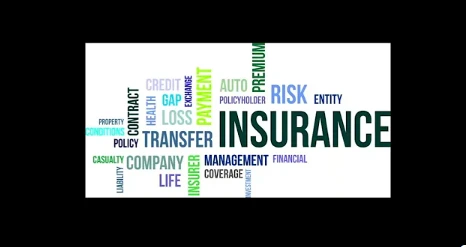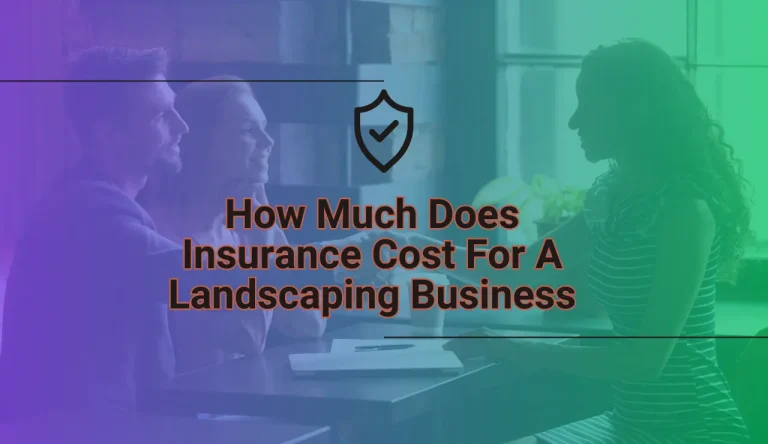How Much To Insure Stump Grinding Business
Are you ready to take your stump grinding business to the next level? As you expand your operations, it’s crucial to consider the potential risks and liabilities associated with your work. Insurance coverage is a must for protecting your business from unforeseen events that could cause financial strain. But How Much To Insure Stump Grinding Business?
By assessing the size and scope of your business, evaluating the types of equipment you use, and researching industry standards and regulations, you can determine the appropriate coverage needed.
Consulting with an insurance professional will help ensure that you have adequate protection in place. Regularly reviewing and updating your policy is essential to keep up with changing needs business without insurance. And don’t forget to compare quotes and policies to find the best coverage at a competitive price.
With proper insurance in place, you can run your stump grinding business confidently, knowing that you are protected against any unexpected challenges that may arise.
Key Takeaways
- Assess the size and scope of the business to determine the appropriate insurance coverage needed.
- Evaluate the types of equipment used and their maintenance requirements to assess insurance coverage.
- Consider potential risks and liabilities associated with the business operations to protect the business.
- Regularly review and update the insurance policy to keep up with changing needs and ensure compliance with legal obligations.

Assess the Size and Scope of Your Stump Grinding Business
You should assess the size and scope of your stump grinding business in order to determine the appropriate amount of insurance need business coverage. Assessing profitability is crucial as it helps you understand how much revenue your business generates and the potential risks involved.
By evaluating your profit margins, you can gauge the financial impact that any unexpected incidents, such as property damage or liability claims, could have on your bottom line. Additionally, consider market competition when determining insurance coverage.
Analyze how many other stump grinding businesses are operating in your area and examine their insurance policies to get a sense of what’s standard within the industry. This will help ensure that you have adequate coverage to protect against potential claims or losses while remaining competitive in the market.
Evaluate the Types of Equipment You Use
When assessing your stump grinding operation, it’s crucial to consider the variety of equipment employed and its potential impact on insurance coverage. To evaluate equipment efficiency, analyze how well your machines perform in terms of power and speed. Look at factors such as horsepower and cutting capacity to ensure that your equipment can handle different types of stumps effectively.
Next, assess the maintenance requirements for each piece of equipment. Consider how often they need servicing or repairs, as this will affect both downtime and potential liability risks. Additionally, examine the safety features of your machinery, such as emergency shut-off switches or protective guards.
Finally, determine if any specialized tools or attachments are necessary for certain jobs and factor in the cost of insuring these items separately if needed. By thoroughly evaluating your equipment’s capabilities and maintenance needs, you can make informed decisions about insuring your stump grinding business.
Consider the Potential Risks and Liabilities Associated with Your Business Operations
Beware of the potential dangers and liabilities lurking within your operations, as they can swiftly turn your dreams into a nightmare. As a stump grinding business owner, it is crucial to consider the potential risks and liabilities associated with your line of work. Accidents can happen, such as personal injuries to yourself or employees, damage to property or utilities, or even legal disputes with clients. By carefully assessing these risks, you can take proactive measures to minimize them and protect your business.
To help you better understand the potential risks and liabilities involved in running a stump grinding business, here is a table that outlines some common examples:
| Potential Risks | Liabilities |
|---|---|
| Equipment malfunction | Personal injury lawsuits |
| Damage to property | Property damage claims |
| Utility line strikes | Breach of contract claims |
By identifying these potential risks and liabilities upfront, you can implement safety protocols, obtain appropriate insurance coverage tailored for stump grinding businesses, and ensure compliance with relevant regulations. Being knowledgeable about these aspects will not only safeguard your operations but also provide peace of mind as you pursue success in this industry.
Research Industry Standards and Regulations for Insurance Coverage
Researching industry standards and regulations is crucial for obtaining appropriate insurance coverage for your stump grinding venture, ensuring you’re adequately protected in the face of potential risks and liabilities. To help you navigate this process effectively, consider the following tips:
- Research requirements: Begin by understanding the specific insurance requirements set forth by your industry. This will give you a clear idea of what coverage is necessary to protect your business.
- Explore coverage options: Take the time to explore different insurance providers and policies available to you. Compare the coverage options they offer, including general liability, property damage, and workers’ compensation, among others.
- Consult with experts: Seek advice from professionals who specialize in providing insurance solutions for businesses in your industry. They can guide you through the intricacies of policy terms and conditions to ensure you select adequate coverage that aligns with your unique needs.
By conducting thorough research and exploring various coverage options, you can secure insurance that not only meets industry standards but also protects your stump grinding business from potential risks and liabilities.
Consult with an Insurance Professional to Determine the Appropriate Coverage for Your Business
To ensure your venture is adequately protected, it is essential to consult with an insurance professional who can determine the appropriate coverage for your unique needs. They will assess various factors such as the size of your stump grinding business, number of employees, and types of equipment used to provide you with a comprehensive coverage plan.
When discussing coverage options, they may recommend general liability insurance to protect against claims of property damage or bodily injury caused by your business operations. Additionally, they might suggest commercial auto insurance if you have vehicles used for work purposes. Regarding insurance premiums, these will vary depending on the level of coverage and risk associated with your specific business. The table below provides an overview of potential coverage options and their respective costs:
| Coverage Option | Description | Estimated Premium |
|---|---|---|
| General Liability | Protects against claims related to property damage or bodily injury | $500 – $1,000 |
| Commercial Auto | Covers vehicles used for work purposes | $800 – $2,000 |
| Workers’ Compensation | Provides benefits to employees injured on the job | $1,500 – $4,000 |
By consulting with an insurance professional and exploring different coverage options, you can make informed decisions that safeguard your stump grinding business while managing insurance premiums effectively.
Review and Update Your Insurance Policy Regularly to Ensure Adequate Protection

Make sure you regularly review and update your insurance policy to ensure that you have adequate protection for your unique needs. Reviewing insurance policies is crucial because the needs of your business may change over time, and it’s important to make sure your coverage keeps up with those changes.
Here are three key reasons why regular updates are essential:
- Changes in Business Operations: As your stump grinding business grows and evolves, you may introduce new services, expand into different areas, or invest in additional equipment. These changes can impact your insurance needs, so it’s vital to update your policy accordingly.
- Legal Requirements: Insurance regulations and requirements can change over time. By reviewing and updating your policy regularly, you can ensure that you remain compliant with any legal obligations related to insurance coverage.
- Emerging Risks: The risks facing businesses are constantly evolving as new technologies emerge or industry standards change. Regularly reviewing your insurance policy allows you to identify any emerging risks specific to stump grinding businesses and adjust your coverage accordingly.
By staying proactive in reviewing and updating your insurance policy on a regular basis, you can ensure that you have the necessary protection to safeguard against potential risks and liabilities in the stump grinding industry.
Compare Insurance Quotes and Policies to Find the Best Coverage at a Competitive Price
When comparing insurance quotes and policies, you’ll discover the perfect coverage at a competitive price that aligns with your unique needs. It’s important to consider various factors that can affect your insurance premium. Factors such as the size of your stump grinding business, the number of employees, and the types of equipment you use can all impact the cost of your insurance. Additionally, your claims history and location may also be taken into account by insurance providers.
To make sure you find the best coverage at a competitive price, it’s essential to compare multiple insurance quotes and policies. This allows you to assess different options and choose one that offers adequate protection while saving costs. When comparing insurance options, it’s helpful to create a table highlighting key features such as coverage limits, deductibles, and any additional benefits offered by each policy.
In addition to comparing quotes, there are several cost-saving strategies you can employ. For example, bundling multiple policies with the same insurer or increasing deductibles can often result in lower premiums. Implementing safety measures in your business operations can also demonstrate risk management practices to insurers and potentially reduce costs.
By thoroughly analyzing different insurance options and utilizing cost-saving strategies, you can find an insurance policy that not only provides comprehensive coverage but is also budget-friendly for your stump grinding business.
Frequently Asked Questions
Conclusion
In conclusion, insuring your stump grinding business is crucial to protect yourself against potential risks and liabilities. Remember to assess the size and scope of your business and evaluate the types of equipment you use. Consider industry standards and regulations for insurance coverage. Consulting with an insurance professional will help determine the appropriate coverage for your business.
One interesting statistic to note is that, according to a recent survey, 78% of businesses that experienced a significant loss without adequate insurance coverage never fully recovered financially. Therefore, it’s essential to regularly review and update your insurance policy to ensure adequate protection at a competitive price.






